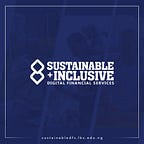Financial Inclusion in Nigeria: One Step Forward, Two Steps Back
The 2017 Global Findex Report is out and it doesn’t paint a pretty picture about Nigeria
The global financial inclusion ecosystem was buzzing with excitement last week with the publication of The World Bank’s Global Findex report at The World Bank/IMF Spring Meetings. The world has made progress since 2014 when the last Global FIndex Report was published — 69 percent of the world’s adult population now have access to a bank account. However, the report shows that Nigeria’s financial inclusion journey has suffered another setback. Of the 1.7 billion adults currently unbanked globally, 4 percent are Nigerian (roughly 68 million).
As at today, financial inclusion in Nigeria stands at 39.7 percent, a drop from from 44.4 percent in 2014. This essentially means that the number of adults with access to accounts has declined, a trend that aligns with the demand-side study released by Enhancing Financial Innovation & Access (EFInA) in 2016.
These two studies confirm that our efforts towards improving access to financial services are yet to produce the desired outcomes. If Nigeria is to reach the target of 80 percent financial inclusion by 2020, the results of these studies serve as feedback and a clarion call for a review of our financial inclusion strategies. This post highlights some of the key World Bank’s Global Findex findings about Nigeria and our thoughts.
Nigeria, according to the Global Findex Report
The World Bank considers an individual financially included provided they have access to a bank account or digital wallet. While access to digital wallet (mobile money) accounts increased to 5.6 percent from 2.3 percent in 2014; access to bank accounts dropped from 44.2 percent in 2014 to 39.4 percent in 2017. The most significant change in the banking industry within that period was the February 2014 introduction of the bank verification number (BVN) warranting the unique identification of all bank account holders. As of April 2018, BVN enrolment exceeded 32 million; with established linkage to over 51 million bank accounts.
With the deliberate efforts of the Central Bank to provide alternate financial access methods, the introduction of mobile wallet framework and other complementary regulatory directives have more than doubled mobile money account ownership which now stands at 5.6 percent from 2.3 percent in 2014. The report also highlighted the huge gender gap in access to financial services — the rate of decline in financial access among women is almost double that of men. Female access dropped to 27.3 percent from 34.0 percent and male to 51.4 percent from 54.4 percent in the same period. The report suggests that “any effort to increase overall account ownership in [Nigeria] needs to prioritize financial inclusion for women.”
Regarding domestic remittances, 23.5 percent of the respondents have sent or received money through an account. This is followed by 18.6 percent who use cash and 8.2 percent who go through an over the counter (OTC) service. While 62 percent of the respondents engaged in savings, only 20.6 percent saved at a financial institution, a further decline from the 27.1 percent in 2014 and 25.4 percent using a savings club or other third party. Likewise, of the 39.6 percent of the respondents who borrowed money, only 5.3 percent of these were from a financial institution; the lion share of 28.3 percent came from family and friends.
From the Global Findex results, it is evident that we need to stop the bleed in many areas. Despite the reported financial inclusion decline, the savings and credit activity numbers are indicative of financially active Nigerian adults, albeit using more informal channels like cash remittances and credit from family and friends and savings with savings clubs or a third party.
The positive rise in the adoption of mobile money accounts is a good indicator and should be capitalised upon. The focus on gender-based products needs reinforcement to support gender equality (SDG 5) and other sustainable development goals. Even though account-based remittances are the most popular, cash instead of OTC (agent) services is still a dominant choice. How can OTC remittances be enhanced? While the popularity and convenience of savings clubs and other third party collectors are not easily replaceable, how can these services be better managed? Finally, how do we improve access to formal credit? Do we need alternative credit analysis systems that can better assess the potential risks of the under-banked and unbanked?
As technology continues to grow and diffuse at a rapid clip across the world, it enables cheaper and more convenient ways of delivering financial services to the world. Innovative digital technologies have flipped the banking model upside down and sideways, allowing providers to break out of the brick and mortar system in order to reach the unbanked. However, even as this report has revealed the progress we’ve made (or lack of), we have to be bolder and more strategic in planning and executing future inclusion drives. The attainment of financial inclusion targets also requires moving it up higher on our priority lists — locally and at the national level.
